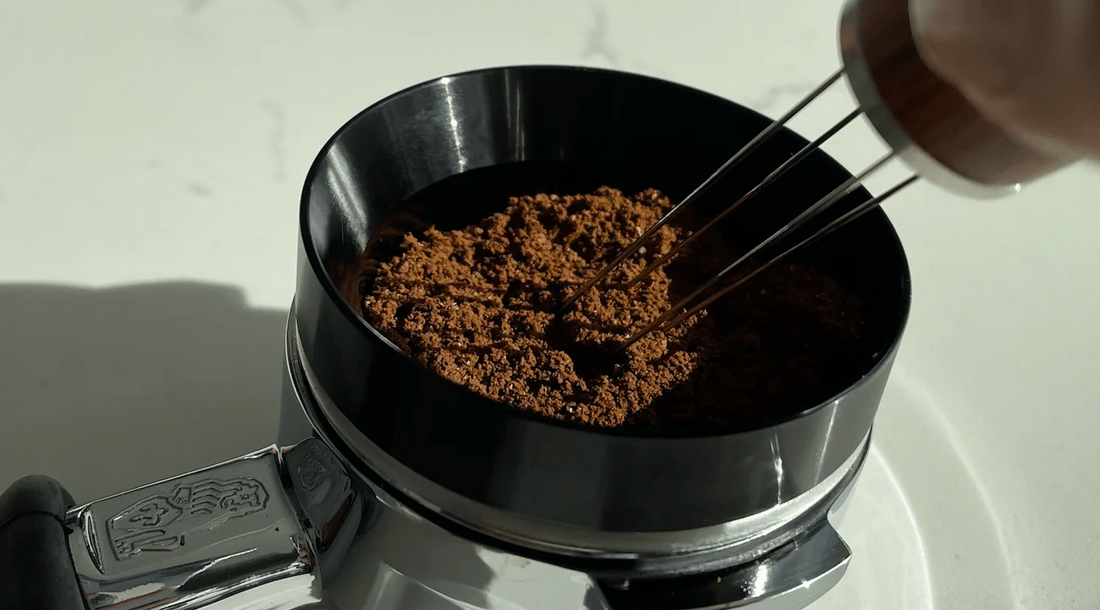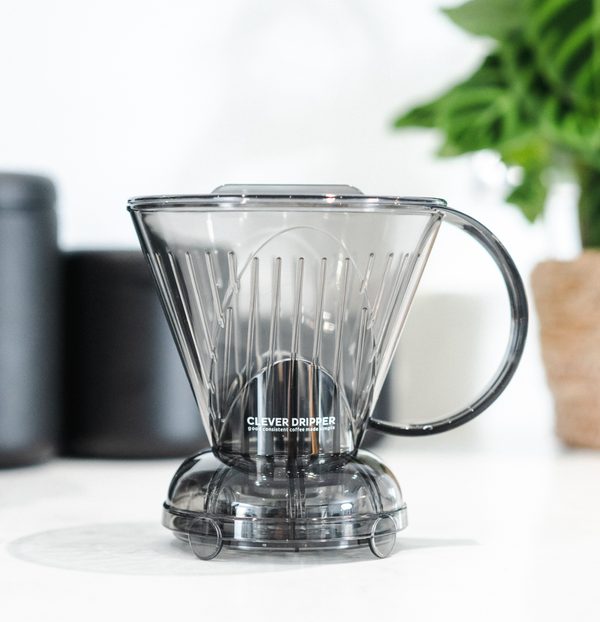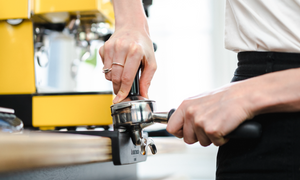
Benefits of WDT
WDT or Weiss Distribution Technique is an idea from John Weiss. The idea came about due to John and many other home baristas struggling with grinders that were producing lots of “clumps”, when grinding for espresso. If you haven’t seen these clumps, which grinders sometimes produce, they almost look like little squares of coffee that stay stuck together rather than nice, even, fluffy grounds. Ideally what you want out of a grinder for espresso is more like sifted flour. This idea initially appeared on several barista forums as far back as 2005. Essentially the idea began with using an Acupuncture needle to mix up and hopefully break apart any clumpy bits of coffee in order to create an even coffee bed, ready to be saturated and extracted.
Firstly this differs from round distributors with wedges, like the NCD from Nucleus Coffee Tools, in a few ways. Both of these tools distribute the coffee but are better suited to different environments. WDT is a bit more labour intensive and with that comes having to have a routine in order to see good and consistent results. The NCD is a workflow tool and more easy to replicate results from person to person, or barista to barista. The other major difference is that the WDT works on the whole bed of coffee where the NCD is mainly distributing the top part of the bed or puck.
Why do we want an even bed? Well, espresso machines are designed to disperse water evenly over the bed of coffee, but unfortunately water is designed to find the path of least resistance. Meaning if you tamp your coffee and it’s not level, the water is likely to go down hill, saturate, and extract much more on one side than the other. Another common one is having these clumps that water finds difficult to saturate, therefore finding its way around the clump. In both of these cases, (and there’s many more ways to make an espresso shot channel) what we’re going to get is a bad tasting espresso. It’s going to be tasting substandard on both ends of the spectrum. On one end, we’re going to have some elements of a weak, watery and under extracted shot. This is from not fully saturating our entire dose that we prepared in the basket. On the other end, some bitter, astringent, almost over extracted elements, from essentially pushing too much water through a very small channel in the middle of the coffee bed.
The WDT gained traction across the internet and in particular, the home barista world over the years. The primitive tools were developed into something more advanced and efficient. Originally starting off with a single needle, before moving on to a more sophisticated tool, with multiple needles working together at once. It’s also important to note that not only did the tools get better, but a lot more visually appealing than acupuncture needles forced into the bottom of a wine cork.
So why did it gain so much traction? It’s interesting that it took so long to gain traction because, up until the last 5 or so years, grinders have really struggled to break up clumps - which is particularly true when grinding finer for espresso. Home grinders have also finally received these new anti-clumping innovations that we have seen in commercial grinders in recent years. Advancement in the anti-clump part of grinders is obviously great, but unfortunately no grinder is perfect. This is why WDT is a great addition to almost any setup, as it significantly mitigates clumping..
Another reason that it has gained so much traction across the last few years is an increased interest in extraction percentages, as well as a desire to reduce waste. Extraction with coffee can be calculated using a refractometer, a calculator, or an app. Essentially, a sample of liquid coffee is placed on a refractometer, which uses a beam of light, and this is refracted through the sample - it’s pretty cool! From this, we get a reading called TDS or Total Dissolved Solids. For this calculation, using the TDS number, the amount of coffee used in grams, and the total amount of liquid coffee in grams, we can then calculate the amount of coffee (that is soluble) that has been extracted. As a general rule, with Arabica coffee, about 30% is theoretically soluble.
Apologies if you are now having flashbacks to science class at school, but there is a good reason why people care about this. A high extraction can mean that you can use dry coffee, to have the same amount of liquid coffee than you would with a lower extraction. Not only that, with a well roasted coffee, the higher extraction can actually taste even better. Now, we all know coffee is a hard to come by resource and getting the most out of your precious beans makes sense, right? If you extract only 20% of a possible 30%, you’re throwing 10% of potential coffee away each time you throw a filter away, or knock out a puck! It should also be noted here that 30% extraction for espresso, although theoretically possible, is almost unachievable without some further innovations into the espresso and grinder worlds. Regardless, by extracting even a little bit more, say 1-2% - results in waste reduction. Also, while on the topic of waste, using a WDT and having a great routine is one of the best ways to avoid channelling, therefore less channelled shots are thrown away.
In summary, Weiss Distribution Technique using a WDT tool is an effective way to distribute the coffee in a portafilter basket. This is in order to make an even coffee bed so it is ready for saturation and extraction in your espresso machine. This means we can minimise waste, not only with improvements in consistency from shot to shot, but also with improvements in extraction percentage of the soluble part of your coffee. Part of the WDT’s brilliance is that it can be utilised with almost any setup, including 54mm and 58mm espresso machines, and you’re likely to notice improvements with just about any grinder.











